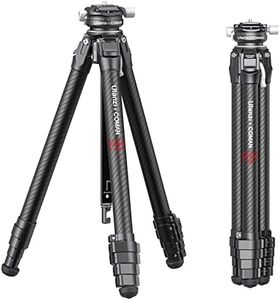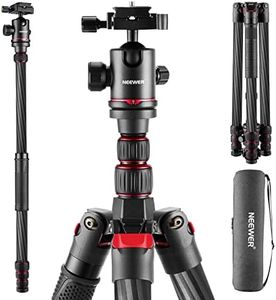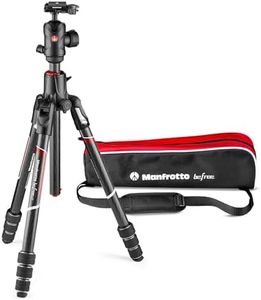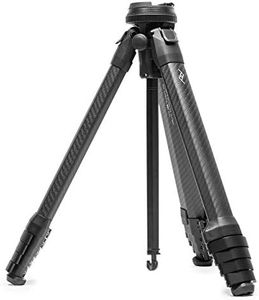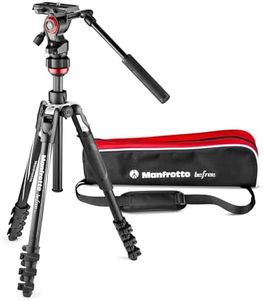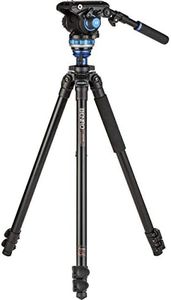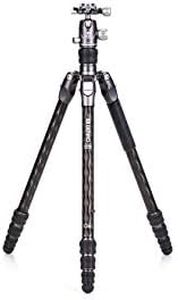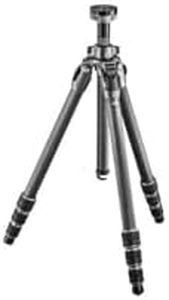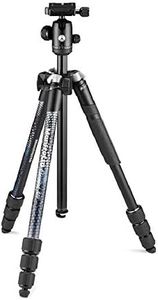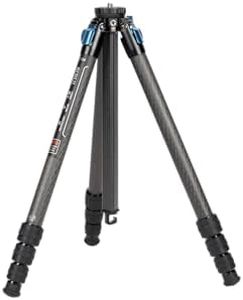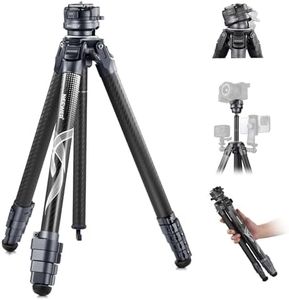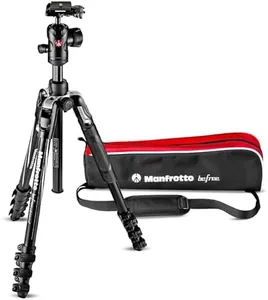We Use CookiesWe use cookies to enhance the security, performance,
functionality and for analytical and promotional activities. By continuing to browse this site you
are agreeing to our privacy policy
10 Best Travel Tripods
From leading brands and best sellers available on the web.Buying Guide for the Best Travel Tripods
Selecting the right travel tripod is all about finding the perfect balance between portability and stability. As you browse through options, it's crucial to keep in mind how you'll use the tripod, where you'll travel, and what kind of equipment you'll mount on it. Think about how much weight you're comfortable carrying, how high you need your camera to be, and the types of situations you'll encounter—whether it's hiking through mountains, exploring busy cities, or capturing landscapes in remote locations. The goal is to choose a tripod that is convenient to carry yet sturdy enough to support your camera, helping you capture sharp, beautiful photos wherever you go.WeightWeight refers to how heavy the tripod is on its own, without any camera gear on it. This is important because a lighter tripod is easier to carry during travel, especially if you have to walk long distances or pack it in a suitcase or backpack. Tripods can generally be divided into ultra-light (under 1.5kg/3.3lbs), mid-range (1.5-2kg/3.3-4.4lbs), and heavier models (above 2kg/4.4lbs). If you mostly travel on foot or by air, or need to pack light, an ultra-light model is great. If stability is more important and you don't mind carrying extra weight, a heavier tripod might suit you better. Consider your physical comfort and how much additional weight your travels allow.
Folded LengthFolded length is the size of the tripod when it is collapsed down, making it easy to pack and transport. This matters because a shorter folded length allows the tripod to fit into backpacks, carry-ons, or suitcases with ease. Folded lengths can range from under 35cm (ultra-compact), 35-50cm (compact), to over 50cm (bulkier). If you want a tripod that fits in most bags or travel luggage, go for a shorter folded length. If portability takes a back seat to stability, a longer length is acceptable, but always check your preferred bag size.
Maximum HeightMaximum height is how tall the tripod can extend, including the center column. This is important because it affects how comfortably you can shoot without bending over. Heights generally range from under 120cm (short), 120-150cm (standard), to over 150cm (tall). Taller tripods are better for standing shots or if you are above average height, while shorter ones are more portable. Choose a maximum height that matches your typical shooting position and avoids frequent crouching.
Minimum HeightMinimum height is how low the tripod can go to the ground. It’s helpful for macro photography, shooting from unique angles, or for extra stability in windy conditions. Tripods with a lower minimum height offer more versatility. Consider how often you shoot close to the ground or want creative angles, and pick a tripod that can collapse low enough for your needs.
Load CapacityLoad capacity tells you how much weight the tripod can safely hold. This is crucial for making sure your camera and lens are supported and safe. Typical capacities range from under 4kg (best for small cameras), 4-8kg (most mirrorless/DSLR combos), to over 8kg (heavy or professional setups). Always choose a tripod with a higher load capacity than the combined weight of your camera and heaviest lens to prevent accidents and maximize stability.
MaterialMaterial refers to what the tripod is made of—usually aluminum or carbon fiber. Aluminum tripods are generally less expensive and sturdy but heavier, while carbon fiber is lighter and resists vibration better, but usually costs more. Your choice should reflect the need to balance weight and durability: go for carbon fiber if you will carry the tripod a lot and want minimal weight, or choose aluminum if occasional use and cost-effectiveness matter more.
Leg LocksLeg locks are the mechanisms that secure the tripod legs at your chosen height, usually either twist locks or flip locks. Twist locks are more streamlined and less likely to snag on things, while flip locks offer quick, visible confirmation that the leg is secure. If speed is your priority, flip locks may suit you; for travel where snagging could be a concern, twist locks are preferred. Try both types if possible to see which feels more comfortable for you.
Feet TypeThe feet of the tripod determine its grip on different surfaces. Rubber feet are best for most smooth or indoor surfaces, while spiked feet provide extra grip on dirt or grass. Some tripods let you switch between types. Choose according to the common environments where you'll be shooting: rubber for city and indoor use, spiked for outdoors or uneven terrain.
Head TypeThe head is where your camera attaches and determines how easily you can adjust angles. Common types are ball heads (quick and flexible adjustments), pan-and-tilt heads (precise control), and specialized video heads (smooth panning). Ball heads are usually best for travel because they are lighter and simpler to use, but if you need precise composition or shoot video, consider the other types. Think about the kind of shooting you do most and select the matching head type.
